The conference Program is available at https://ifac.papercept.net/conferences/conferences/SSSC22/program/. Please, note that the conference program is tentative and subject to changes.
SSSC Plenary and Semi-plenary talks
Plenary talk:
Mae Seto, Dalhousie University, Canada
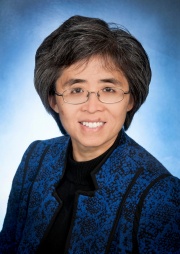
Title: Control Challenges for Mobile Autonomous Robots in Harsh Environments
Abstract: A harsh robotic environment is defined as one where it is difficult to sense, communicate, control, move around or otherwise operate a cyberphysical system – for which robots are one example. The harshest environments include underwater and space (Earth orbit). Traditional control theory constructs a plant model to design, develop and test a proposed control methodology. Uncertainties in the plant are always acknowledged as caveats when qualifying the performance and efficacy of a methodology. The robot’s interaction with an unstructured dynamic environment precludes a well-defined plant. This presentation will look at the use cases of underwater and space environments and note similarities and differences in their harsh environment control challenges. Finally, promising research directions and examples are presented.
Semi-plenary talk:
Erik I. Verriest, Georgia Institut of Technology, USA
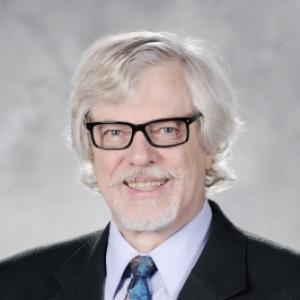
Title: Graceful Transitions through Maximal Persistence of Behavior
Abstract:
Problems of locomotion typically encounter switching between gaits. In many applications, it is desirable to make such transitions between modes or gaits inconspicuous and graceful. This is achieved by keeping the typical behavior of the system as persistent as possible.
It is shown that this problem can be defined in a more abstract sense, and therefore generalized to a new class of problems, called “maximum persistence of behavior.”
In this presentation, I will give a precise definition of this concept, for signals and for systems, and illustrate some applications from thermodynamics to signal study and robotics. I will also introduce the dual problem of filtering in the context of “maximal persistence of behavior.” The results stem from joint work with Deryck Yeung (Trinity University, San Antonio, TX), Basit Memon (Habib University, Karachi, PK), and Vishal Murali (now at NVIDIA) while at Georgia Tech.
The paradigm starts by defining typical behaviors in the framework initiated by J.C. Willems. Gluing two typical signals or typical system behaviors requires connections (raccordations) that belong to a larger class of behaviors, but are locally close to the typical behaviors. Solutions with persistent behavior are then sought via optimization for a kernel or an image problem.
This solution encapsulates the controllability problem of Willems, morphing theory in image analysis, object shaping, quasi-stationary transitions from thermodynamics, and orbit transfer problems, and can be characterized in a geometric way in the robotics framework, obvious applications are in gait transitions for biomimetic robots as when switching from walking (e.g., while inspecting) to running (evasion), or a gait transition necessitated by a change in terrain (solid, muddy, or granular).
In particular, I will discuss a method of smoothly connecting periodic orbits of systems. We first deal with the case when the periodic signals to be connected are of the same period and then move on to discuss the case of different periods, requiring in addition a frequency warping.
Semi-plenary talk:
Somayeh Sojoud, Assistant Professor, UC Berkeley, California, US

Title: Computational Methods for Machine Learning and Artificial Intelligence
Abstract: The area of data science needs efficient computational methods with provable guarantees that can cope with the complex nature and high nonlinearity of many real-world systems. Practitioners often design heuristic algorithms tailored to specific applications, but the theoretical underpinnings of these methods remain a mystery and this limits their usage in safety-critical systems. In this talk, we aim to address the above issue for some machine learning problems. First, we study the problem of certifying the robustness of neural networks against adversarial inputs. We then study the problem of robust neural network training and develop convex formulations to train networks that are robust to adversarial inputs, followed by efficient training algorithms with global convergence guarantees. In order to accelerate the computation, there is a major effort in the machine learning community to understand when simple local search algorithms could solve nonlinear problems to global optimality. A key proof technique relies on the notion of Restricted Isometry Property, whose conservatism is not well understood, and it cannot be applied to nonsmooth problems either. We discuss our recent results on addressing these problems and demonstrate the results on tensor decomposition with outliers, video processing, and online optimization in machine learning.
TDS Plenary and Semi-plenary talks:
Plenary Talk:
Emilia Fridman, Professor, Tel Aviv University, Israel

Title: Using delays for control
Abstract: In this talk by ”using delays” I understand either Time-Delay Approaches to control problems (that originally may be free of delays) or intentional inserting delays to the feedback. I will start with an old Time-Delay approach – to sampled-data control. In application to network-based control with communication constraints, this is the only approach that allows treating transmission delays larger than the sampling intervals. I will continue with ”using artificial delays” via simple Lyapunov functionals that lead to feasible LMIs for small delays and to simple sampled-data implementation. Finally I will present a New Time-Delay approach – this time to Averaging. The existing results on averaging (that have been developed for about 60 years starting from the works of Bogoliubov and Mitropolsky) are qualitative: the original system is stable for small enough values of the parameter if the averaged system is stable. Our approach provides the first Quantitative bounds on the small parameter making averaging-based control (including Vibrational Control and Extremum Seeking) reliable.
Semi-plenary talk:
Sue Ann Campbell, Professor, University of Waterloo, Canada
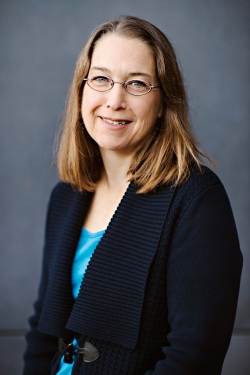
Title: Time delay, Hopf bifurcation and synchronization
Abstract: We consider networks of oscillator nodes with time delayed, global circulant coupling. We first study the existence of Hopf bifurcations induced by coupling time delay, and then use symmetric Hopf bifurcation theory to determine how these bifurcations lead to different patterns of phase-locked oscillations. We apply the theory to a network inspired by biological neural networks in the cortex. Each node consists of two populations: one excitatory and one inhibitory. There is non-delayed coupling between excitatory and inhibitory populations in the same node and time-delayed coupling between excitatory population in different nodes.
Semi-plenary talk:
Jianhong Wu, University Distinguished Research Professor, York University, Toronto, Canada
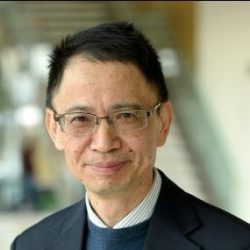
Title: Delay adaptation for optimal signal parallel preprocessing and skewed subspace clustering
Abstract: We present some recent progress in developing a data-driven high dimensional data clustering algorithm using delay adaptation and discrete Lyapunov functions. In our dynamical system approach towards data clustering, we aim to develop a feedforward and feedback neural network that self-organizes high dimensional data into clusters characterized by the network’s local attractors and their domains of attraction whose boundaries describe the clustering criteria. For a high dimensional data, clusters (and local attractors) are formed in lower dimensional subspaces not pre-prescribed, and delay adaptation governed by the dissimilarity between features of emerging clusters and input signals is the critical feedback mechanism for the convergence of the subspaces where clusters are formed. These subspaces can be skewed, so the principal component analysis must be incorporated into the delay adaptation. We will illustrate the global convergence theory and algorithm with some real-life applications.
LPVS Plenary and Semi-Plenary talks:
Plenary talk:
Javad M. Velni, Associate Professor, School of Electrical & Computer Engineering, The University of Georgia, Athens, GA, USA
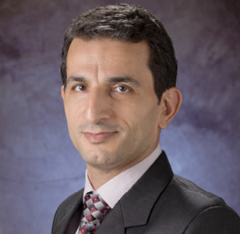
Title: Safe and Uncertainty-aware Learning and Adaptive Control of Safety-critical Systems in LPV Framework
Abstract:
The talk will focus on our recent work on data-driven modeling and safe learning-based control of nonlinear systems in LPV framework. LPV models are learned using inputs/outputs data with uncertainty quantification attached to the learned models using variational Bayesian inference. The learned probabilistic LPV models are then used for adaptive predictive control design purposes. New LPV model learning paradigms are then presented based on online transfer learning, as well as model agnostic meta learning. It is shown how the learned models can be updated online in tandem with the stochastic model predictive controller in the loop to guarantee a safe closed-loop operation. Applications of the developed tools to two different case studies in manufacturing and automotive systems will be presented.
Semi-plenary talk:
Mauricio de Oliveira , Professor, University of California, San Diego, CA, USA
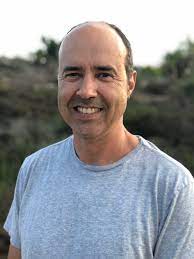
Title: Controllers with constraints: robust, gain scheduled, and structured controllers
Abstract:
The design of feedback controllers that are asked to satisfy structural constraints remains as challenging a problem today as it was decades ago. Whereas there has been significant advance in the techniques to analyze stability of feedback systems, with polynomial relaxations extending and unifying many robustness and stability results and pushing the envelope of the class of problems that could be considered solved, design problems continue to challenge systems and control researchers and practitioners.
In this talk, we will revisit various problems in robust, gain scheduling and structured control. Along the way, we will establish connections among various forms of constraints and associated notions of stabilities. We will conclude with the introduction of some new tools that hold the promise of unifying two of the competing frameworks for controller design by reformulating the Youla parametrization of all stabilizing controllers in the form of linear matrix inequalities.
Semi-plenary talk:
Masayuki Sato, Associate Senior Researcher, Institute of Space Technology and Aeronautics, Japan Aerospace Exploration Agency, Japan
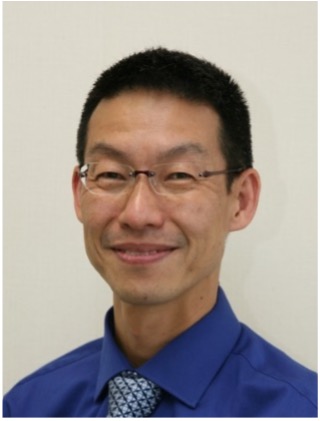
Title: From Impractical LPV Controllers to Practical and “Implementable” LPV Controllers: Verification with Research Airplane
Abstract:
The basic design technique of LPV controllers (state-feedback as well as output feedback controllers) has been almost developed in the late of 1990’s by extending H-infinity control design technique to LPV framework. However, the designed output feedback controllers are not practical if conservatism reduction is aimed with use of parameter-dependent Lyapunov functions. This is because the state-space matrices of the LPV controllers depend not only the current scheduling parameters but also the derivatives of the scheduling parameters (continuous-time case) or one step ahead scheduling parameters (discrete-time case). In other words, the designed LPV controllers are “impractical” with respect to the implementability. Furthermore, it is implicitly supposed that precise values of scheduling parameters are available. However, in practical systems, it is very rare to obtain precise values of scheduling parameters (e.g. so-called “position errors” in airspeed with use of Pitot tubes). These issues have been overlooked from academia for a long time. This talk focuses on these implementability issues and presents controller design methods to produce practical LPV controllers with a simple application of Elimination lemma. The flight test results using the designed practical LPV controllers, in which the usefulness of the proposed method is well illustrated, are also shown.
